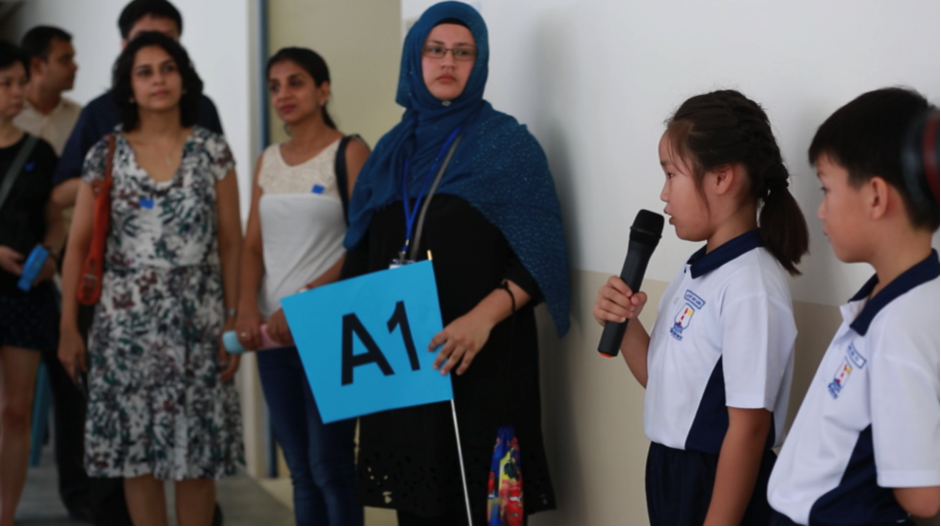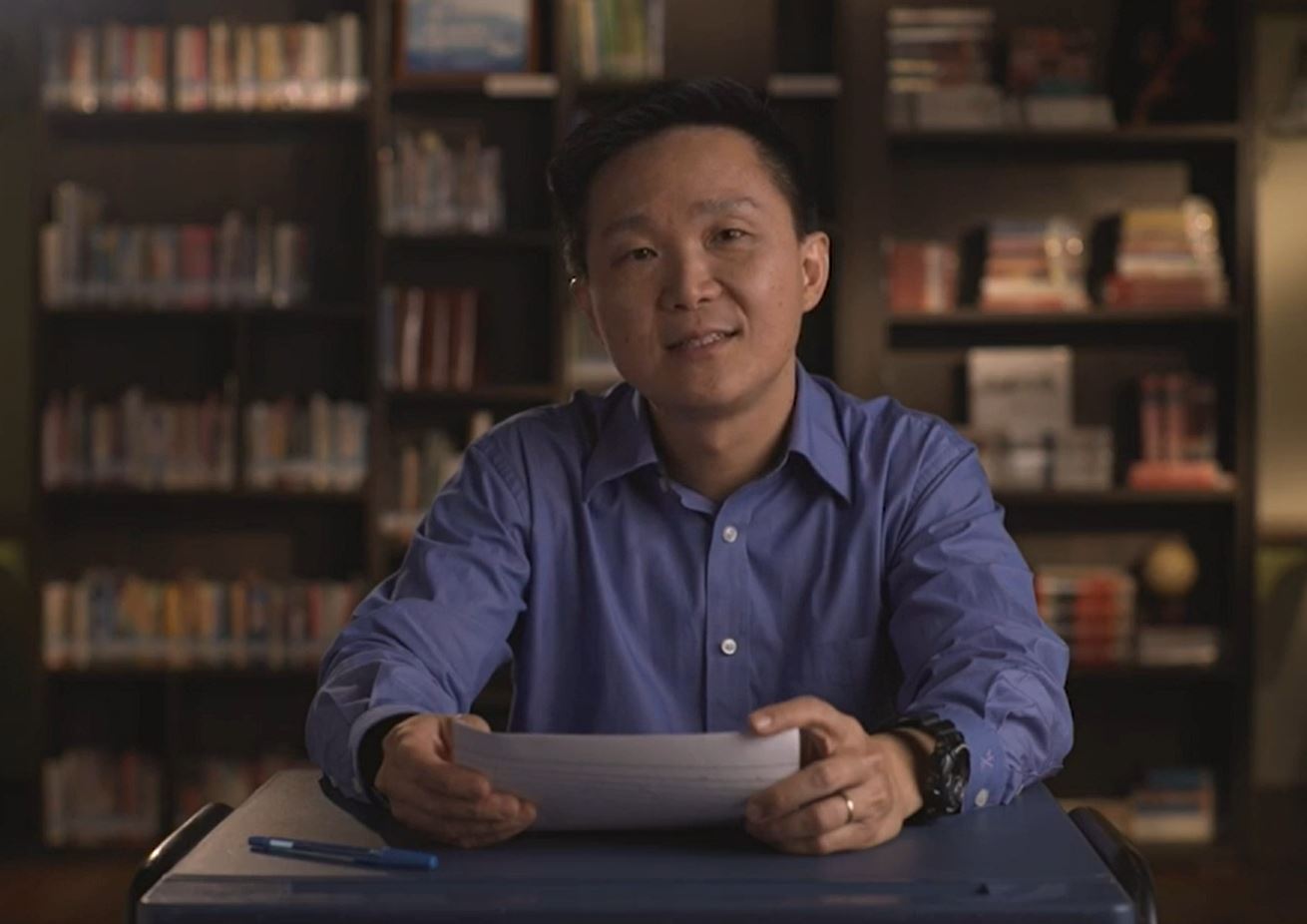It all started when NorthLight School’s English Department designed a programme to improve their students’ spelling skills.
The teachers came up with a multi-pronged approach, teaching students methods to break words down and reinforce their learning, and giving them a platform to display their skills.
NorthLight School is one of the four specialised schools in Singapore that provides more hands-on learning for students after they have completed their primary school education.
Through these spelling methods, the teachers plant a seed and empower our students to believe in themselves”, says Mrs Tai. “The methods were illuminating for them and made them realise that spelling is not as daunting as it may seem.”
Parents, you may want to try these ideas at home!
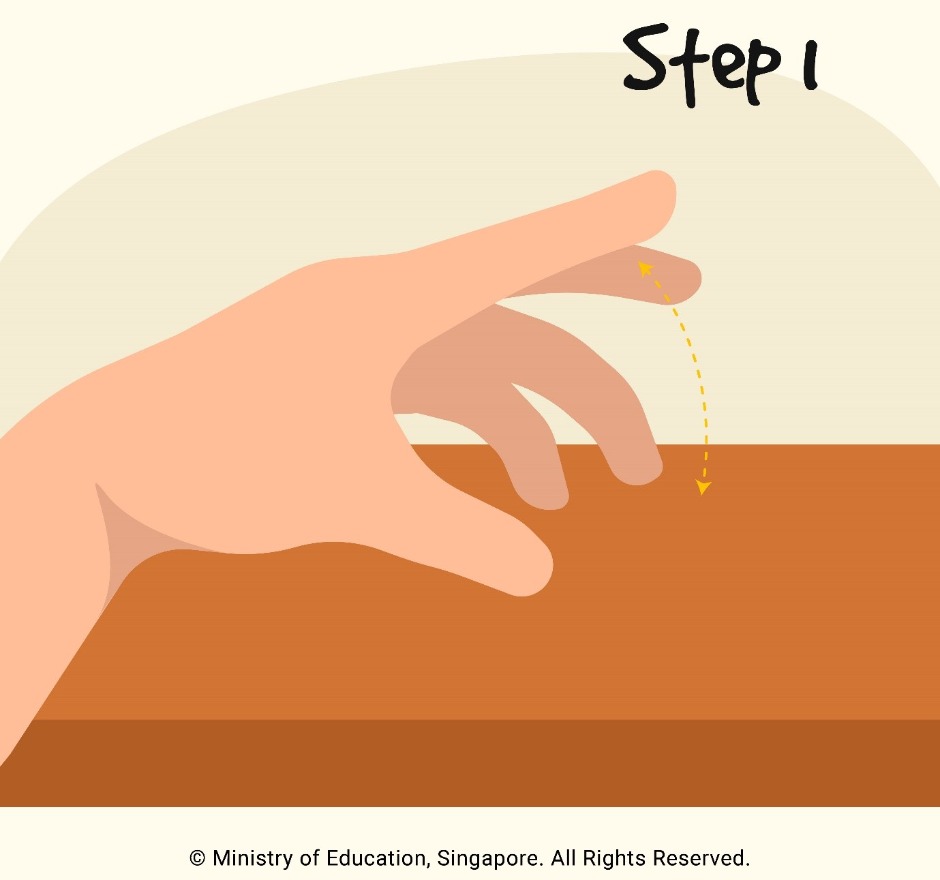
Students tap their finger with each syllable they enunciate to make up a word with multiple syllables.
1. Lift a finger for a phoneme, tap a finger for a syllable
Ever heard of finger spelling? NorthLight’s teachers saw how the multisensory technique, which helps students to think through a word before they write it, could be adapted to suit their Year 1 and Year 2 students.
Students are first taught to enunciate each sound (or phoneme) that makes up a monosyllabic word. To spell ‘cat’, for example, they would enunciate the three phonemes that make up the letters “c”, “a”, and “t”. Using their non-dominant hand, they would raise their index finger to each phoneme.
This gives the students visual cues as they write the letters out with their dominant hand.
Most students would have basic phonics knowledge from their preschool and primary school education, so they do know the letter that corresponds to each phoneme,” explains NorthLight’s Head of Department for English, Mrs Tai Peng Peng.
“For those who still lack such foundational knowledge, the teacher will prompt by asking which letter makes each sound and guide them towards the correct spelling and recap the relevant phonics rule if necessary.”
The students find that breaking a word down this way is useful and motivating – even when they misspell a word, they may have gotten some phonemes correct, which makes getting the whole word right more attainable with a few more tries.
English teacher Ms Chen Wei Teng designed the two-lesson package. She explains, “This finger-spelling method is often used to teach students with dyslexia but we modified it to suit those with other learning difficulties. It works well too.”
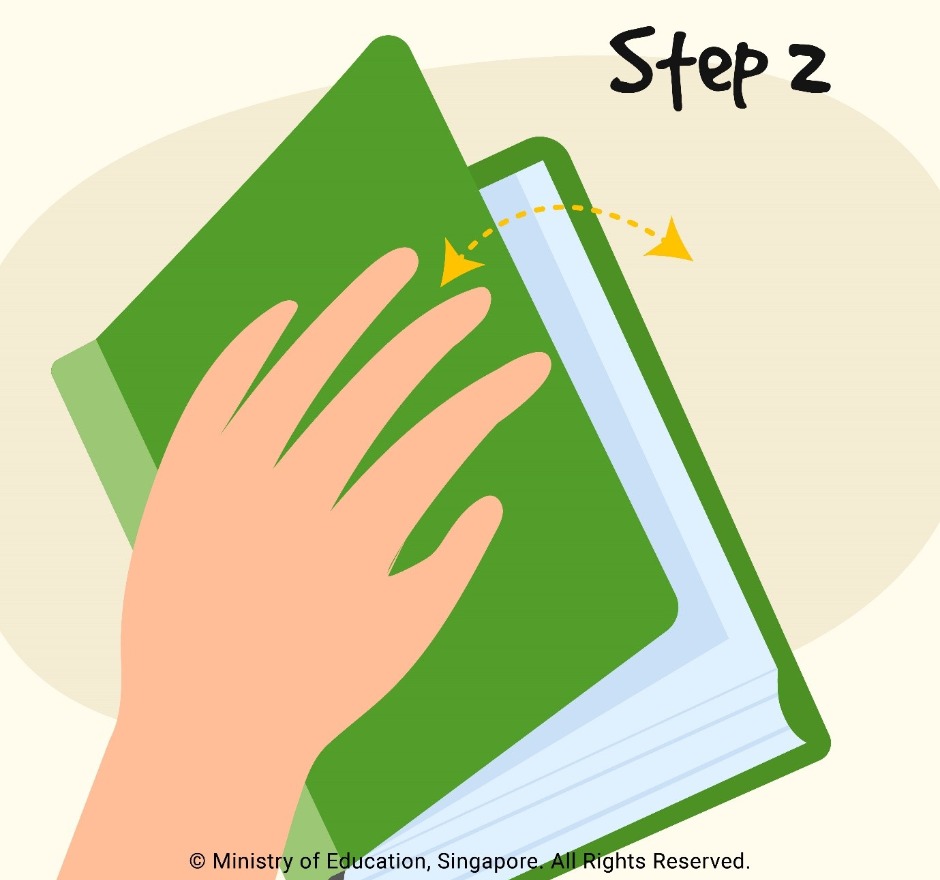
2. Test and check to reinforce learning
For the older Year 3 and Year 4 students who have to spell longer and more complicated words, the ‘Look Say Cover Write Check’ strategy was introduced.
Students are taught to first “Look” at the spelling of a word to identify any spelling patterns such as repeated letters next to each other or any familiar parts. They then “Say” it aloud based on the phonemes, “Cover” the word and visualise it in their minds, “Write” the word and “Check” if they have spelt it accurately. This reinforces their familiarity with spelling the word.
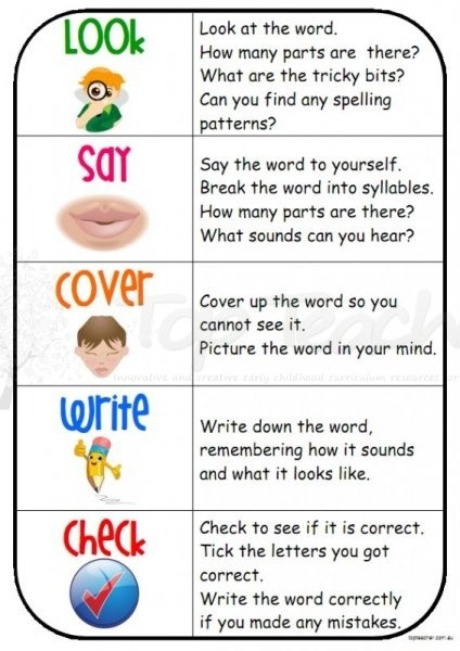
A poster on the ‘Look Say Cover Write Check’ strategy is put up in every Year 3 and Year 4 classroom for students to refer to when practising their spelling.
Says Mr Heng Kai Le, a Year 3 English teacher, “I like how this strategy allows students to notice if a word consists of any spelling patterns that they may be familiar with. I take the time to examine a word closely with my students, write down each of its syllables with a different-coloured marker and draw their attention to the presence of any prefixes and suffixes that may help them to better remember the spelling.”
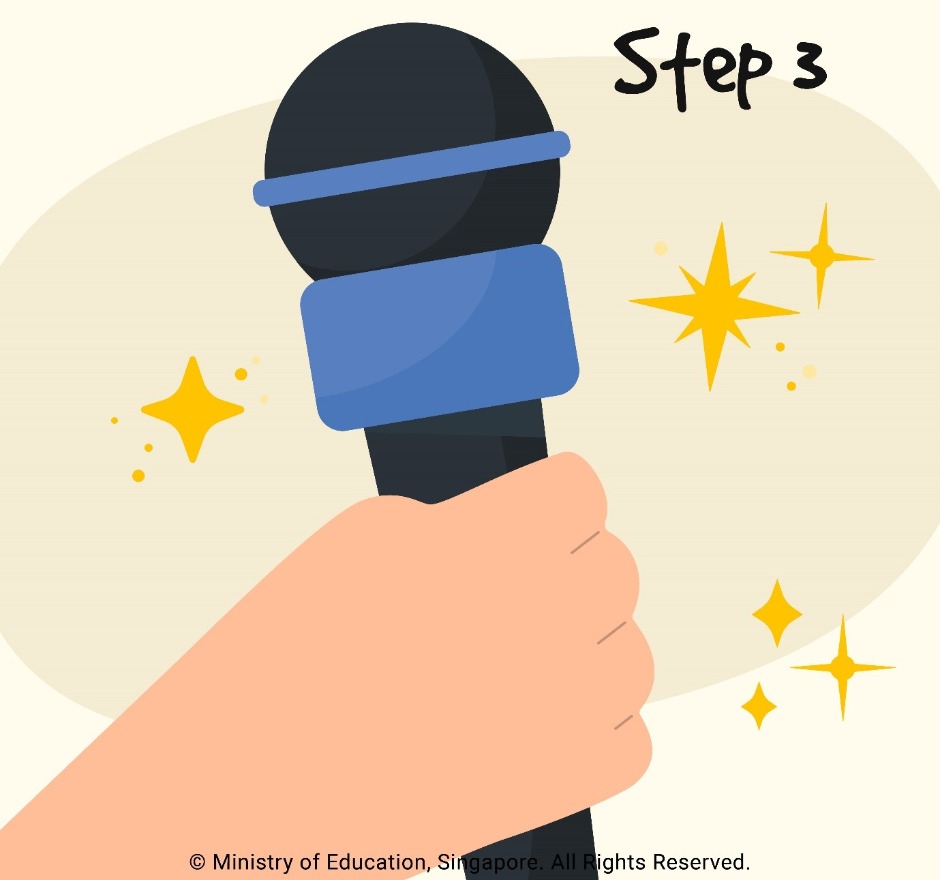
3. Put your skills to practice – and make it fun
As their students master their spelling skills, they are encouraged to take part in the school’s annual Spelling Bee. The element of friendly competition helps in skill retention and builds drive and confidence in the students. Students are also paired up to build teamwork and provide mutual support.
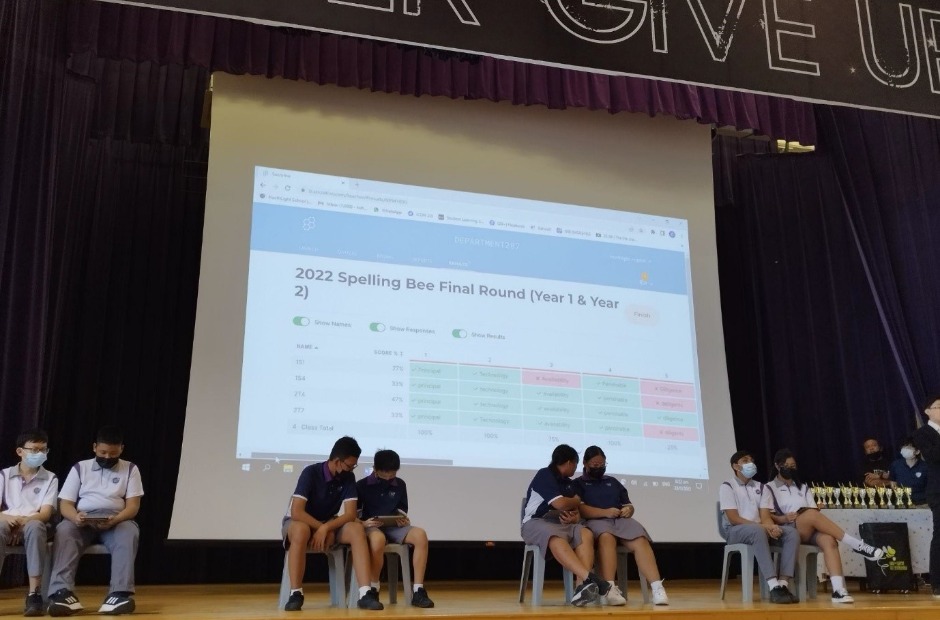
Participants on stage during the Spelling Bee finals, discussing their answers.
Lower secondary and upper secondary classes compete within their levels in the spelling competition through various stages, leading up to the finals held during school assembly.
Teachers select high-utility words that are pitched to each grade level. During the competition, students can also guess the missing word in a sentence as contextual clues, before the answer is given and the student spells it out.
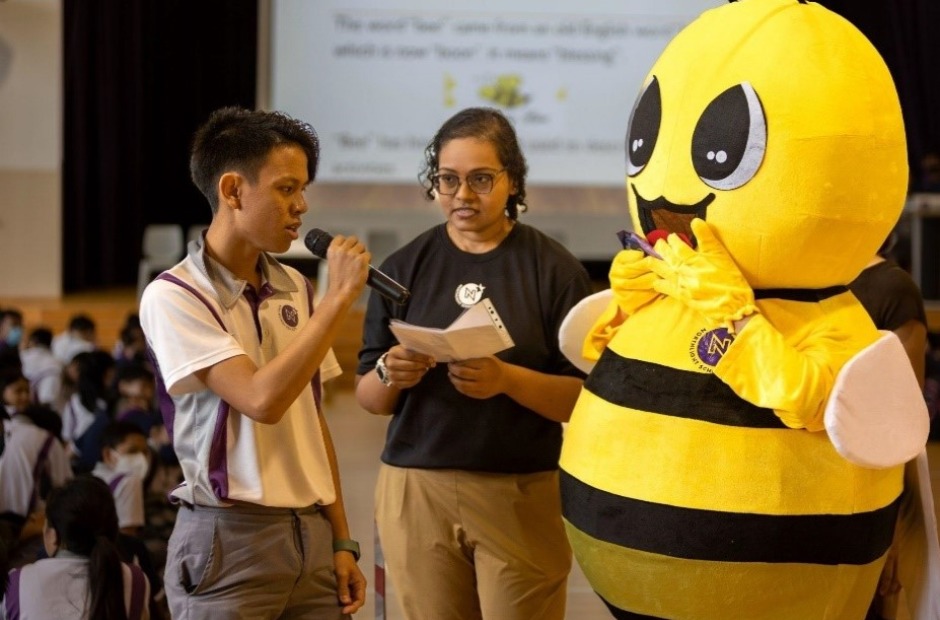
At last year‘s Spelling Bee, a teacher gamely dressed up as a Spelling Bee mascot that roamed the school hall, armed with a microphone, encouraging students from the floor to attempt spelling some words too.
The idea of standing in front of their peers and being judged on their spelling abilities can be intimidating, but the student contestants get a big boost of confidence through the exercise every year.
“I was up against stiff competition, But I learnt that I could go the extra mile,” says Year 4 student Brandon Owyong Jing Kai, who was part of the winning team. “I did not win the trophy when I was in Year 1 to Year 3, but I was determined to win it this year for my lower secondary form teacher, to make her proud.”



.jpg)
